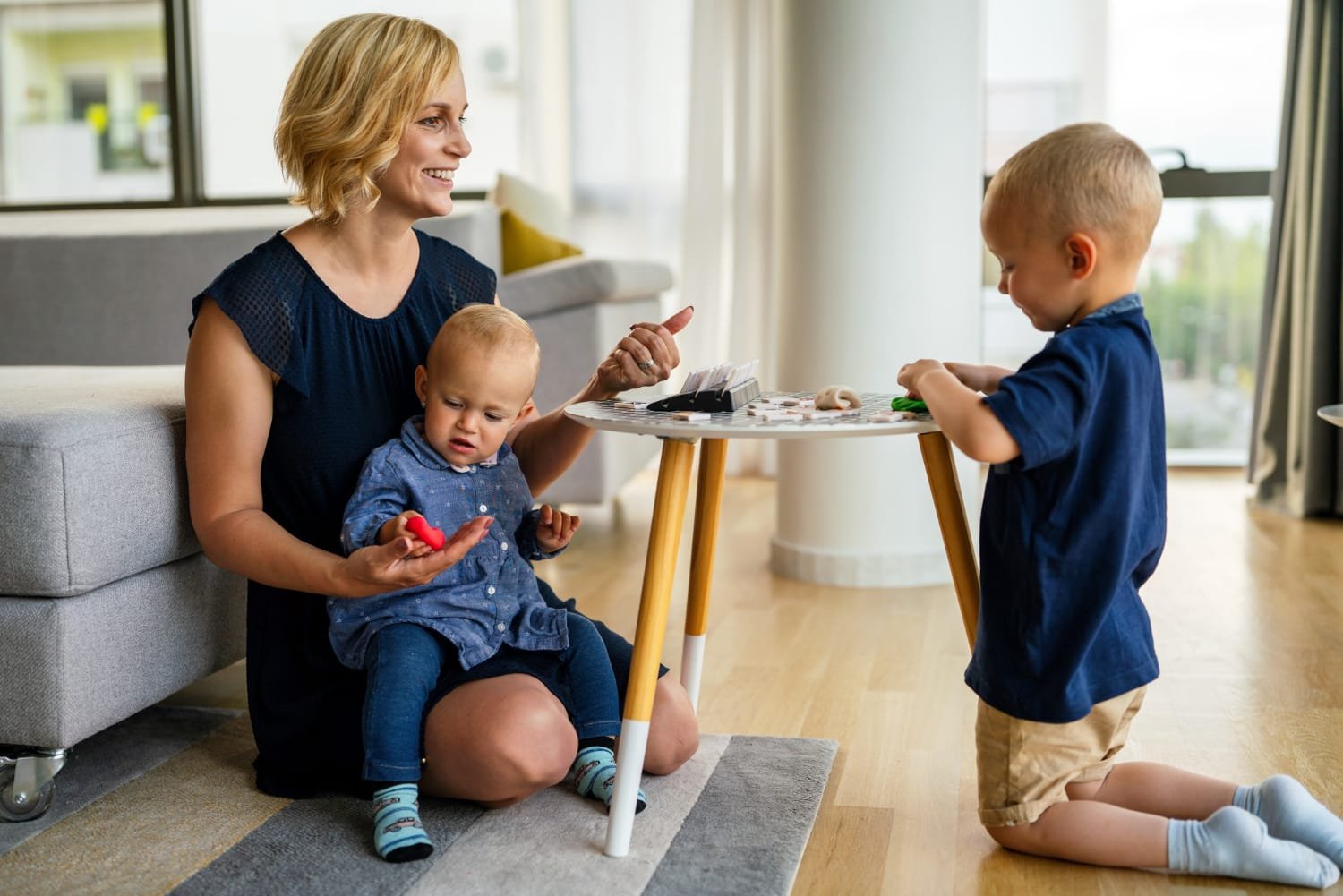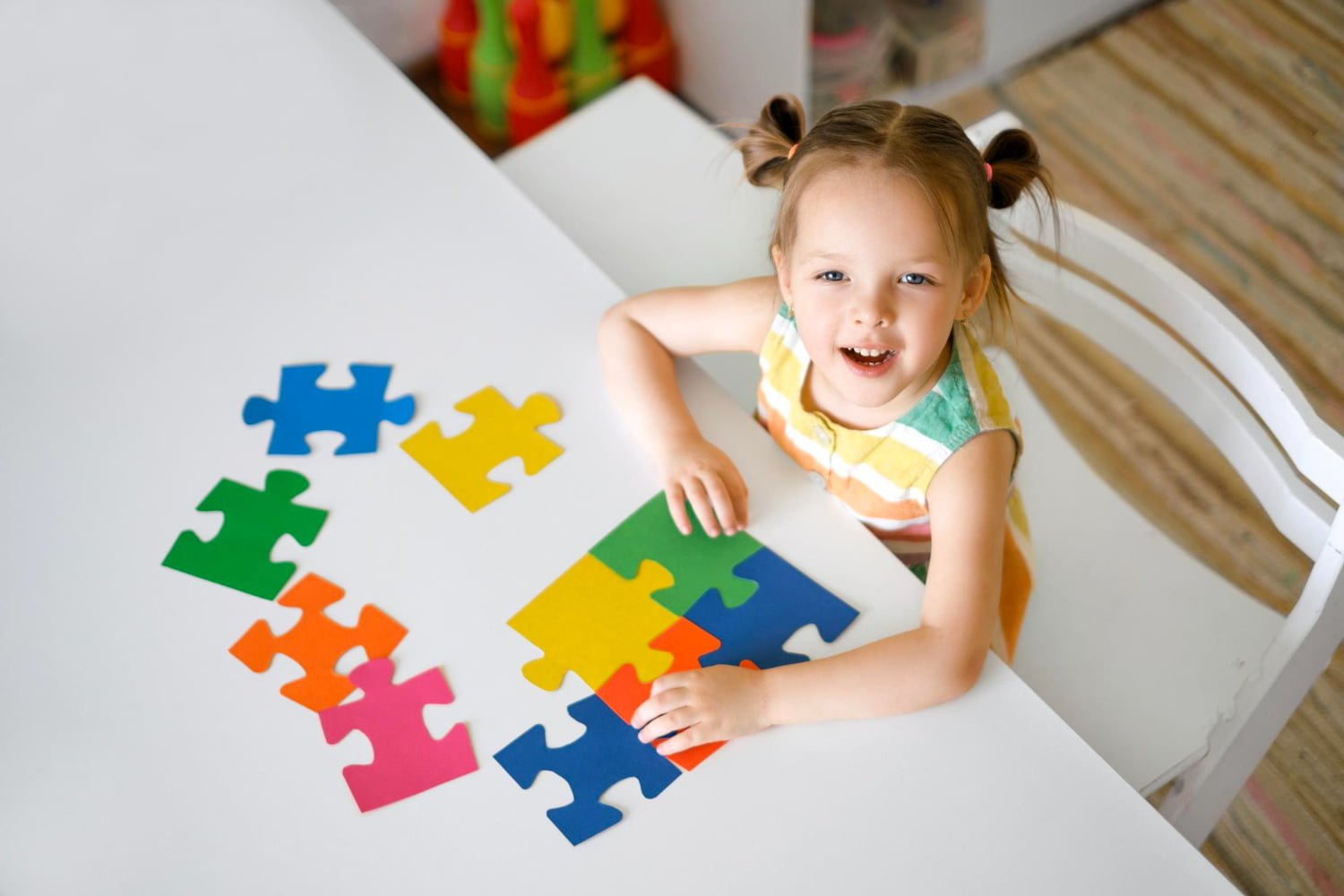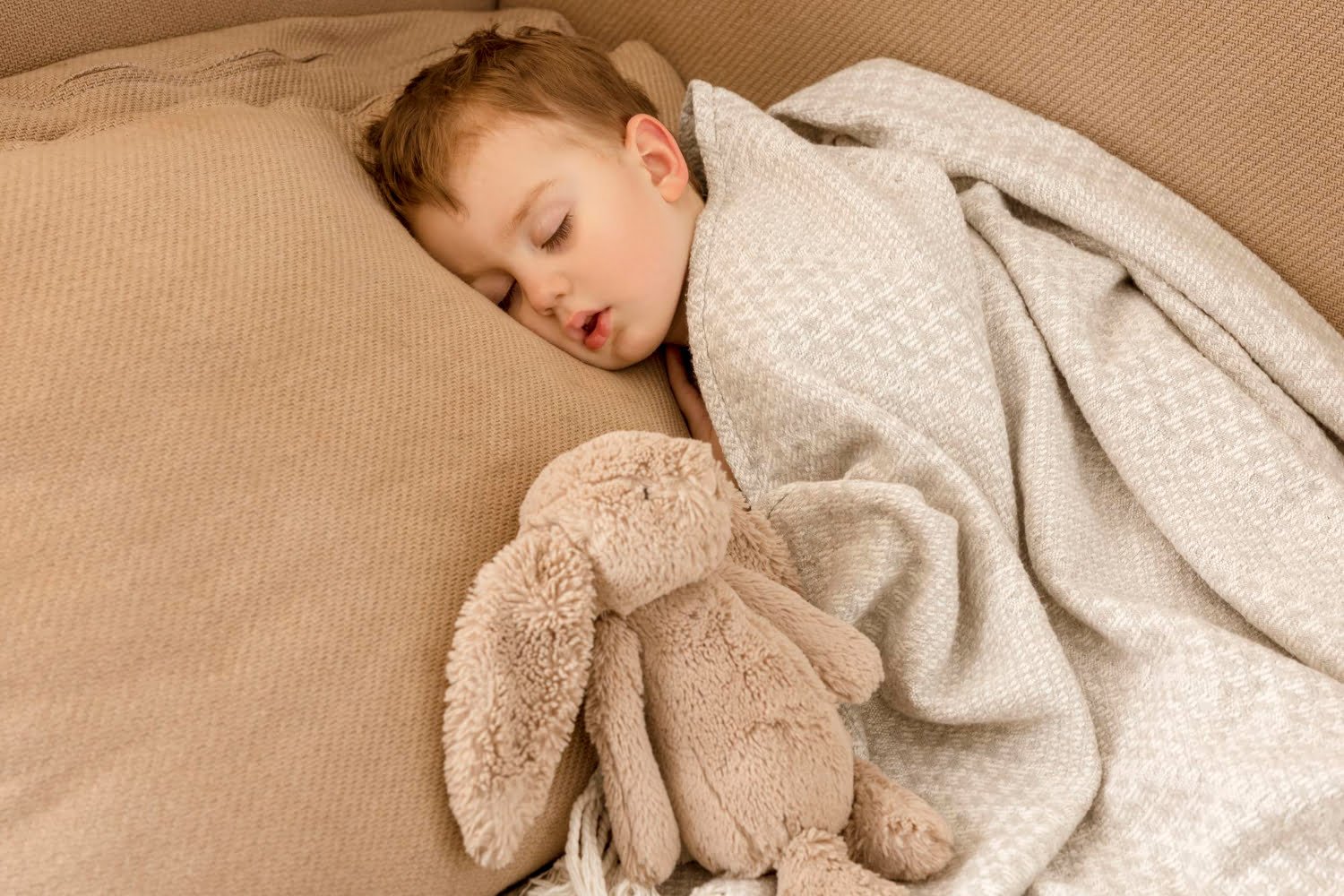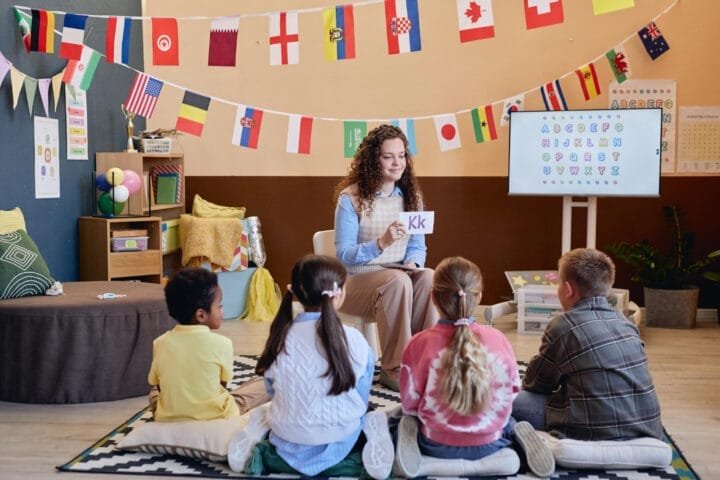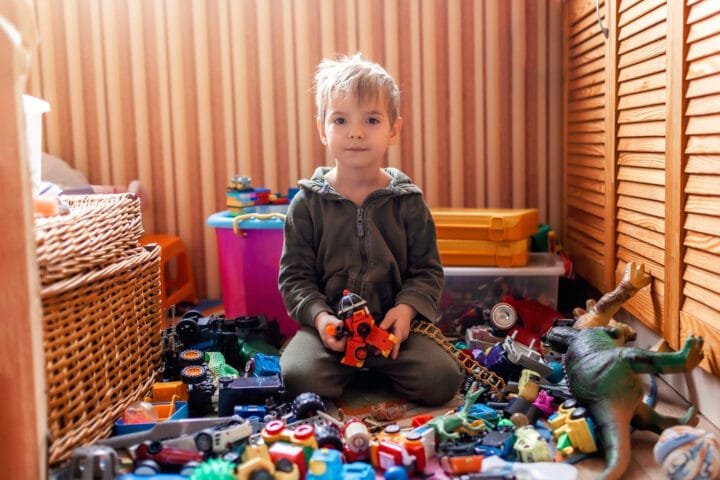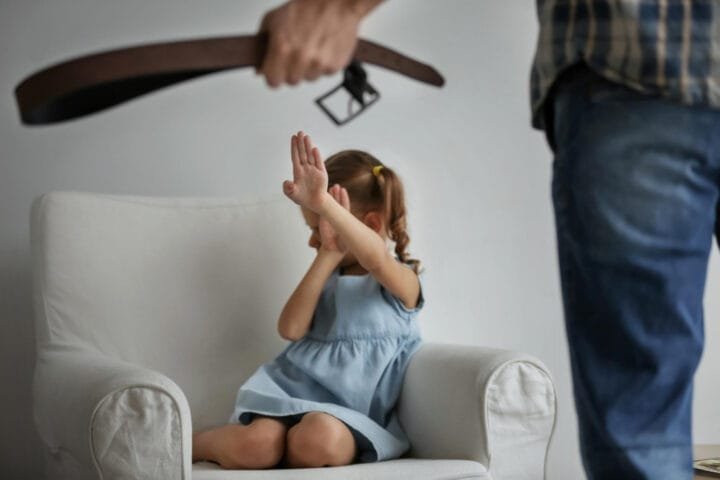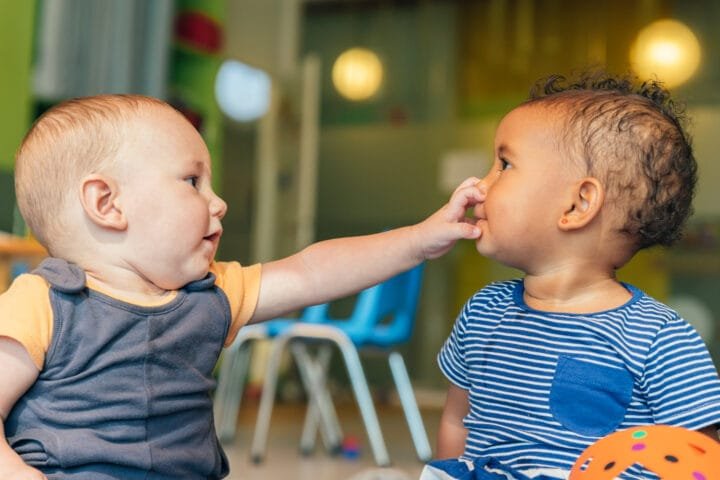Help! Little Sibling Bothering Older Sibling Non-Stop! (A Survival Guide for Worn-Out Parents)
Let’s be honest, everyone! Sibling rivalry is something we all experience as parents, and it’s completely relatable. If you find yourself slipping away to the bathroom for a moment of peace while your youngest challenges their older sibling, know that you’re not alone. We’re all on this beautiful yet chaotic journey together, and it’s okay to acknowledge the struggle!
Seriously, “little sibling bothering older sibling” has to be one of the most frequently Googled phrases by parents on the brink. I’ve been there more times than I care to admit. My two, who I love more than life itself, could switch from sweet little angels to tiny, warring factions faster than you can say “time out.” There was a period of my life that included conflict that occurred up to eight times an hour! Exhausting? You have no idea. But here’s the thing: it’s normal. It’s not a sign that you’re failing as a parent, or that your kids are destined for a lifetime of animosity. This is just part of the messy, beautiful, chaotic journey of family life.
The “Bothering” Thing: Seriously, It’s Everywhere
My own two? They were the inspiration for this entire article. One minute, they’d be building a magnificent Lego castle together, the next. A meltdown over who placed the last brick was an emotional rollercoaster, often leaving me overwhelmed. I realized we’re all in this together. According to the University of Cambridge, sibling relationships are among the most intense in a family, making this a shared experience of growing up.
Why I Wrote This: A Lifeline for the Weary
I’m sharing my family’s struggles because, through trial and error, deep breaths, and research, I’ve learned valuable lessons that I want to pass on to you. This will serve as your battle plan and secret weapon for achieving peace at home. Let’s dive into the reasons behind the classic sibling dynamic. Additionally, I will provide you with practical, real-world strategies that have proven successful for me and many other parents.
Decoding the Pestering: Why Little Siblings Act Like Tiny, Adorable Tormentors
Alright, let’s break this down. Why do these little ones seem genetically predisposed to annoy their older siblings? It’s a tangled web of developmental factors, but understanding the root cause is the first step towards a solution. And trust me, there is a light at the end of the tunnel.
They’re Not Trying to Be Annoying (Usually): The Science-y Stuff
First, let’s give these little munchkins a bit of a break. Their brains are still cooking!
- Egocentrism in Early Childhood: Okay, picture this: your little one is the sun, and the entire universe revolves around them. That’s pretty much their reality. They’re not being selfish; they literally struggle to see things from another person’s point of view. It’s a developmental stage, confirmed by the American Academy of Pediatrics. They are the main characters in their little world.
- Social Skills: Still Under Construction: That “bothering”? It might actually be a really awkward attempt to connect. They want to play to be involved, but they haven’t quite mastered the art of social interaction yet. Think of it like a toddler trying to waltz – it’s going to be clumsy! They haven’t yet learned the delicate dance of social interaction.
- Impulse Control? What’s That? Let’s be honest; most adults haven’t mastered impulse control (I’m looking at you, emergency chocolate stash). Now, imagine being a tiny human with zero impulse control. They see something shiny; they grab it. They have a thought, and they blur it out. Patience is a virtue they’re still working on, to put it mildly.
“Look at Me!”: The Never-Ending Quest for Attention
Sometimes, that pestering is basically a flashing neon sign that screams, “Pay attention to me!”
- Negative Attention is Still Attention: It’s a tough pill to swallow, but even negative attention from you or your sibling is better than being ignored. If whining gets a reaction, guess what? They’re going to whine some more. It’s a vicious, attention-seeking cycle. Research indicates that children often prefer negative attention to no attention at all, reinforcing disruptive behaviors.
- Parental Attention: The Ultimate Prize: In a family, your attention is like gold. Younger siblings often feel like they’re in an all-out competition for their share. It’s not just about wanting attention; it’s about feeling secure and loved. It is a primal need to feel safe and significant.
- Spotting the Signs: Does the bother get worse when you’re on the phone or trying to get something done? Does it escalate quickly into a full-blown meltdown? Bingo! Attention-seeking might be the main culprit.
Copycat or Mini-Me? When Admiration Gets Annoying
Sometimes, that annoying behavior is actually a twisted form of flattery.
- Older Siblings: The Ultimate Role Models: Little ones often idolize their older siblings. They want to be just like them, do everything they do, have everything they have. It’s sweet, in a way, but also… a lot. It is a form of hero-worship, plain and simple.
- Learning by Watching (and Copying… Everything): Kids are like little sponges, soaking up everything around them. And who better to learn from than their cool older sibling? They mimic behaviors, interests, and even the way they talk. It’s how they figure out the world. But it is incredibly annoying.
- When Imitation Crosses the Line: Look, admiring your big sis is one thing. Constantly invading her space and copying every single move? That’s a whole different ball game. We’ll talk about boundaries later.
“I’m Bored!”: The Battle Cry of the Unoccupied Child
Ah, boredom. The arch-nemesis of parents everywhere. A bored kid is a recipe for chaos, plain and simple.
- Boredom and Trouble: A Match Made in… Well, Not Heaven: A bored child will find ways to entertain themselves, and more often than not, that involves tormenting their sibling. It’s science! (Not really, but it should be.) Research shows a direct link between lack of mental stimulation and disruptive behaviors in children.
- The Activity Vacuum: If they don’t have toys, games, or activities to keep them busy, guess who becomes their default source of entertainment? Yep, their unsuspecting sibling. It’s like being trapped in a room with nothing to do but poke the person next to you. Eventually, you are going to poke them.
- The Magic of “Me Time”: We need to teach our kids that it’s okay, even beneficial, to entertain themselves. Independent play isn’t just about keeping them quiet; it’s crucial for fostering creativity and self-reliance.
The Older Sibling’s Struggle: Why They’re About to Lose It (And How We Can Help)
Now, let’s flip the script and see things from the older sibling’s perspective. Their frustration is just as accurate and just as valid, and understanding it is key to restoring peace. They are not being mean or selfish. They are just kids being kids.
“Get Out of My Room!”: The Desperate Plea for Space
As kids grow, they start to crave independence, a little corner of the world they can call their own.
- The Independence Quest: Just like the little ones, older siblings are on their developmental journey. They’re figuring out who they are and what they like, and they need space to do that. Think of it as their little chrysalis phase. They are blossoming into their person.
- Privacy, Please! Everyone needs privacy, including children. They require a space to retreat and recharge without someone always watching over them, which is vital for their emotional well-being. A study in the Journal of Child Psychology and Psychiatry emphasizes the importance of privacy for adolescent development.
- Feeling Heard: It’s so important to let our older kids know that their feelings are valid. It’s okay to be annoyed, to want space, to set boundaries. We need to acknowledge their emotions, even if we don’t always love their reactions.
“You’re Ruining Everything!”: When Interruptions Become World War III
Imagine being deeply engrossed in something, only to be constantly interrupted. You’d lose it, too!
- Focus is Fickle: Older kids often have homework, hobbies, or activities that require concentration. Constant interruptions can totally derail their train of thought and make it impossible to get anything done. It is like trying to build a house of cards in a hurricane.
- Control Issues: When they feel like they have zero control over their environment or their time, older siblings can feel utterly helpless and, understandably, furious. It’s like their world is being invaded, and they’re powerless to stop it.
- Real-Life Examples: Picture this: your older child is painstakingly building a Lego masterpiece, only to have their little sibling toddle over and smash it to smithereens. Or they’re trying to practice their violin while the younger one is banging on pots and pans like they’re in a heavy metal band. It’s enough to make anyone snap!
“That’s So Unfair!”: The Green-Eyed Monster of Jealousy
Ah, jealousy. It’s a powerful emotion, and it can wreak havoc on sibling relationships.
- “They Get Away With Everything! “Sound familiar? Older siblings often feel like the rules are different for their younger counterparts, leading to a whole lot of resentment. Perceptions of favoritism, even if imagined, can seriously damage sibling relationships, according to family therapists.
- The “Responsible One” Burden: Older siblings often feel pressured to be the mature one, the role model. It’s a heavy burden for a child to carry, and it can easily lead to resentment.
- Fairness is a Balancing Act: We need to be mindful of how we treat our kids, striving for fairness, even if it’s not always perfectly equal. It’s a constant juggling act, that’s for sure.
When Enough is Enough: The Emotional Fallout for Older Siblings
Let’s not forget that this constant pestering takes a real toll on the older sibling. It’s not just about being annoyed; it can lead to more significant issues if we don’t address it.
- Spotting the Red Flags: Is your older child becoming more withdrawn? Are they snapping at their little sibling more often? Having trouble sleeping? These could be signs that the constant bothering is causing them real stress. We need to be on the lookout for these warning signs. It is like a pressure cooker; eventually, something has got to give.
- The Long-Term Stuff: Research has shown that ongoing sibling conflict can affect a child’s emotional well-being, self-esteem, and even their ability to form healthy relationships down the road. It’s not just about surviving the here and now; it’s about their future, too. A study in the journal “Pediatrics” found that children in frequent sibling conflicts were more prone to anxiety and depression.
- They Both Need Us: This isn’t about taking sides. It’s about recognizing that both kids are struggling, and both need our help to navigate this complex dynamic. We’re the mediators, the referees, the safe harbor in the storm. We are grown-ups.
Practical Strategies: How to Help When a Little Sibling is Bothering an Older Sibling
Okay, we’ve explored the “why,” now let’s get to the “how.” How do we turn this constant conflict into, well, maybe not perfect harmony, but at least something resembling a peaceful coexistence? Here’s where we get down to brass tacks, folks.
Creating Structure and Boundaries: Setting the Stage for Harmony
This is all about creating an environment where both kids can thrive independently and together.
- “Alone Time” is Sacred: Each child needs time where they can be alone, without interruption. It could be an hour after school or a designated “quiet time” on weekends. Make it non-negotiable, like brushing your teeth or paying taxes.
- Example: “From 3:30 PM to 4:30 PM, every day is Big Brother’s alone time in his room. Little sister, you can play quietly in the living room during this time.”
- “Do Not Disturb” Signals: This can be a fun little system. Maybe it’s a unique hat, a sign on the door, or a stuffed animal placed outside their room. When the signal is up, it means “leave me alone” in a kid-friendly way.
- Example: A red bandana on the bedroom door means “Do Not Enter.” A yellow bandana means “You can knock and ask me something.”
- “That’s Mine!”: This one’s a classic. Establish clear rules about borrowing toys, entering each other’s rooms, and respecting personal space. Kids thrive on boundaries, even if they push against them.
- Example: “You must always ask before taking something that belongs to your sibling. If they say no, you have to respect their decision.”
Redirection and Engagement for the Younger Sibling: Keeping Them Positively Occupied
A busy child is a happy child, and a happy child is way less likely to be a bothersome one!
- Activities Galore: Stock up on toys, games, and activities that your little one can do independently. Think puzzles, coloring books, building blocks, playdough – anything that can capture their attention for more than, say, five minutes.
- Example: Create a special “Busy Box” filled with fun, engaging activities that only come out when the older sibling needs some alone time.
- “Special Time” with You: This is crucial, folks. Schedule dedicated one-on-one time with your younger child. It doesn’t have to be hours long; even 15-20 minutes of focused attention can work wonders. Read a book, play a game, or just cuddle and chat. Let them know they are loved and valued.
- Example: “Every day after lunch, Mommy will spend 20 minutes playing your favorite game with you.”
- “Can You Help Me?”: Instead of just telling them to stop bothering their sibling, teach them alternative ways to ask for attention. Help them learn phrases like, “Mommy, can we play together?” or “Daddy, will you read to me?”
- Example: Practice with them. Role-play different scenarios where they can practice positively asking for attention.
Empowering the Older Sibling: Giving Them Tools to Cope
Let’s equip our older kids with the skills they need to navigate this challenging situation like little ninjas.
- “I” Statements are Your Friend: Teach them to stand up for themselves respectfully. Instead of yelling or hitting, they can learn to say things like, “I don’t like it when you mess with my stuff,” or “I need some space right now, please.”
- Example: Practice with them. Role-play different scenarios where they can practice using “I” statements to express their needs.
- Problem-Solving 101: Help them brainstorm solutions to everyday conflicts. Instead of constantly running to you to solve their problems, encourage them to think of ways they can resolve things on their own. It is a lifelong skill.
- Example: “If your little sister keeps taking your markers, what are some things you could do?” (Possible solutions: put the markers out of reach, offer her a different set of markers, ask her to trade, etc.)
- It’s Okay to Feel Frustrated: Let them know it’s perfectly normal to feel annoyed or frustrated. Acknowledge their feelings without judgment. We’re not aiming for sainthood here, just healthy coping mechanisms.
- Example: “I know it’s really frustrating when your little brother messes up your game. It’s okay to feel angry about that.”
Fostering Positive Interaction: Building a Bridge, not a Wall
This is about creating opportunities for positive shared experiences, so they see each other as allies, not adversaries.
- Play Together, Stay Together (Maybe): Find activities that both siblings enjoy and can do together. This could be anything from playing a board game to building a fort to baking cookies. The key is to find something that encourages cooperation and teamwork, not competition.
- Example: “Every Saturday morning, we’ll have a family game time where we all play a board game together.”
- Cheer Each Other On: Encourage them to appreciate each other’s unique talents and abilities. Point out when the younger sibling does something kind or helpful and when the older sibling is being patient or understanding. Positive reinforcement goes a long way.
- Example: “Wow, little brother, you’re really good at drawing! Maybe you can teach your big sister how to draw that dinosaur.” Or “Big sister, thank you for being so patient with your little brother while he was learning to play the game.”
- Family Meetings: The Peace Summit: This is a fantastic way to address ongoing issues and work together to find solutions. It gives everyone a voice and helps kids learn to communicate and compromise. Think of it as a regular family check-in, not just a crisis intervention tool.
- Example: “Every Sunday evening, we’ll have a family meeting to talk about what’s going well and what we can do to make things better next week. Everyone gets a chance to share their feelings and ideas.”
Parental Mediation and Intervention: When to Step In (and When to Butt Out)
Sometimes, despite our best efforts, things escalate. That’s when we, the parental superheroes, need to swoop in. But knowing when to intervene and when to let them figure it out is a delicate dance.
- Red Flags: Time to Intervene: Are they yelling or hitting? Is one child consistently being victimized, physically or emotionally? Is the conflict disrupting the entire household, turning your home into a war zone? These are clear signs that you need to step in pronto. Trust your instincts, mama. You know when things have gone too far.
- Mediation Strategies: Referee, Not Judge: Hear Them Out: Give each child a chance to tell their side of the story without interruption. Use phrases like, “Tell me what happened” and “How did that make you feel?” Avoid taking sides or making assumptions. This can be incredibly difficult when you’re frustrated and just want the noise to stop, but it’s so important. Each child needs to feel heard.
- Dig Deeper: What’s the real issue here? Is it really about the toy, or is it about something more significant, like feeling left out or ignored? Help them uncover the underlying cause of the conflict. Sometimes, the surface issue is just a symptom of a deeper problem.
- Guide, Don’t Dictate: Instead of imposing a solution, help them brainstorm ideas for resolving the conflict. Ask questions like, “What could you do differently next time?” or “How can we solve this problem together?” Empower them to be part of the solution.
- Compromise is Key: Teach them that sometimes, nobody gets exactly what they want. Life isn’t always fair, and learning to compromise is a valuable lesson that will serve them well beyond childhood. It is about finding a middle ground that everyone can live with.
- Consequences, Not Punishment: If rules were broken, follow through with appropriate consequences. This teaches them that actions have consequences and helps them learn from their mistakes. But remember, the goal is to teach, not to punish. Make sure the result fits the “crime.”
- Teaching Conflict Resolution: Life Skills 101: Be a Role Model: Kids learn by watching us. Show them how to resolve conflicts peacefully and respectfully in your relationships. Let them see you compromise and communicate effectively with your partner, friends, or other family members. You are their primary example.
- Turn Squabbles into Teachable Moments: When conflicts arise, use them as opportunities to teach conflict resolution skills. Talk about feelings, brainstorm solutions, and practice compromise. Turn those frustrating moments into valuable life lessons.
- Story Time with a Purpose: There are tons of great children’s books and shows that deal with sibling rivalry and conflict resolution. Use these as conversation starters to talk about these issues in a non-threatening way. It is a great way to approach these topics in a relatable way.
- Practice Makes Progress: Like any skill, conflict resolution takes practice. The more opportunities they must practice, the better they’ll become at it. Be patient and keep at it.
- The Art of Staying Out: When to Let Them Duke It Out (Verbally, of course): This is a tough one for us parents. We want to jump in and fix everything, but sometimes, they need to learn to navigate these choppy waters on their own.
- Minor Bickering: If it’s just a little squabbling or a minor disagreement, give them a chance to work it out themselves. Observe from a distance, like a silent, watchful hawk, but resist the urge to intervene immediately. You might be surprised at what they can accomplish on their own.
- Learning Through Doing: Every conflict is a chance for them to learn valuable social and emotional skills. Let them practice those skills, even if it’s a bit messy and uncomfortable at times. These are the skills that will help them in all their future relationships.
- Building Resilience: Overcoming challenges on their own build’s resilience and self-confidence. It teaches them that they are capable of handling difficult situations, a lesson that will serve them well throughout their lives.
Conclusion: Towards a More Peaceful Home (and Maybe a Little More Sanity for You)
We’ve covered a lot of ground, and I hope you’re feeling more empowered and maybe a little less overwhelmed by the “little sibling bothering older sibling” saga. Remember, this is a journey, not a destination. There will be good days and bad days, moments of blissful harmony, and moments when you want to pull your hair out. But with patience, persistence, and a whole lot of love, you can create a more peaceful and harmonious home for your family. And maybe, just maybe, you’ll even get to enjoy a hot cup of coffee in silence now and then!
Final Thoughts: You’ve Got This, Mama (or Papa!)
This is a marathon, not a sprint. There will be days when you feel like you’re failing. There will be days when you want to lock yourself in the bathroom and hide. There will be days when you question your decision to have more than one child. But hang in there. Keep practicing these strategies. Keep communicating with your kids.
Most importantly, keep believing that things will improve. You’re not alone in this; we’re all navigating the chaotic world of parenting together. You’ll have great stories to tell when they’re older, and maybe you’ll even laugh about it someday.
Remember that these early sibling interactions are crucial for their future relationship. Your efforts now will pay off. One day, you might overhear them playing nicely together, and in that moment, you’ll know it was all worth it.
Recommend Books
This is a classic in the field of sibling relationships. It directly addresses the challenges of sibling rivalry and offers practical, compassionate advice on how to reduce conflict and foster cooperation between children. It provides tools for parents to help their children express their feelings, resolve disputes, and appreciate each other’s differences.
The Sibling Effect: What the Bonds Among Brothers and Sisters Reveal About Us by Jeffrey Kluger
This book delves into the science and psychology of sibling relationships, exploring how these bonds shape our personalities, behaviors, and life choices. It provides a broader understanding of the long-term impact of sibling dynamics.
Dr. Markham’s book emphasizes the importance of connection and empathy in parenting. She provides guidance on how to create a peaceful home environment where siblings can thrive. I focus on strengthening the parent-child relationship as a foundation for better sibling relationships.
While not solely focused on siblings, this book provides valuable insights into child development and offers a compassionate, brain-based approach to discipline. It emphasizes connection and redirection over punishment.
How to Talk So Kids Will Listen & Listen So Kids Will Talk by Adele Faber and Elaine Mazlish
This is another classic by Faber and Mazlish that focuses on effective communication between parents and children. Assertive communication is essential for resolving conflicts and building strong relationships.
FAQs
Younger siblings often know how to annoy their older siblings, which can be frustrating. They usually do this to get attention, imitate others, or because they are bored. They don’t mean to be mean; they are just trying to learn. This article explains these reasons to help you understand their behavior.
That’s the million-dollar question! We want our kids to resolve conflicts independently, but we also need to prevent escalation. For minor bickering, it’s good to give them space to sort things out and practice problem-solving. However, if there’s physical aggression, hurtful language, or consistent victimization, it’s time to step in and mediate. Check out the article for practical tips!
It’s tough to see your older child struggling. Their feelings are valid, so acknowledge their frustration and let them know it’s okay to feel annoyed. Ensure they have time and space to retreat and recharge. Teaching them to use “I” statements, like “I need some space right now,” can help them communicate their needs. We also have a section in the article on empowering older siblings with coping strategies to help them feel more in control.
I know the stress it causes! Prevention is essential and making sure you provide age-appropriate activities such as puzzles, building blocks, and art materials can keep your child entertained. Making time for one-on-one sessions with each child could assist in reducing the need for attention. The article also talks about the need to create a controlled space with distinct boundaries that can help avoid sibling fights.
Relax, Mama, take a moment to relax. Sibling relationships can be a challenge, and it’s not uncommon to be overwhelmed. You are demonstrating great concern in allowing your children to get along with one another. By encouraging them to communicate freely and assisting them in resolving disputes, you will strengthen the bond between them. This takes time, but with patience and kindness, you can create stronger relationships. A peaceful future and harmony are likely. You’re doing a fantastic job!





